Business Administration Optimization
Streamlining the business administration processes of multiple specialized companies.
Role
Fully responsible of the UX-UI design of the solution.
Timeline
End 2021 – early 2022
A short heads up
Since I’m bounded to a nondisclosure agreement, there are no specific client- or team member names mentioned throughout the portfolio and case studies. When names do show, there are additional agreements made with the client/person at hand. Some designs are distorted to meet the agreement.
Sketches, designs and concepts are copyrighted by Linx-IT Solutions bv. All rights reserved.
Thank you for understanding!
Introduction
Solving administrational challenges
Administrational processes of companies differ. A range of tools are used. Diverse forms of communication are present. Prices and agreements are different. Activities do not match, or are not fluidly connected.
The team and I createdan universal application that connects these differences seamlessly. We’ve managed to integrate both company specific requirements and the prime business requirements. Companies are still able to operate separately from one another, while we streamlined their administrational processes.
My contribution
My responsibility was to find balance between both business requirements and people’s needs. It was my job to visualize workflows, and to transform them into concepts. Ending the project with a visual and interaction design of the application. That can be handed over to engineering effectively.

Discovery
How close collaboration between companies brings complex administrational challenges to the table
FullComm is a unique combination of four companies. Specialist in:
- Photography studio. Specialist in model- and product photography (alias – Voto).
- Creative high-end services for imagery (alias – HighEnd).
- Marketing production executions (alias – ProMark).
- Software development. Cloud solutions for marketing and ecommerce (alias – CloudTech).
All of them support an important part of the marketing communication chain of a client. Due to the seamless collaboration, expertise can be borrowed from another company efficiently. Resulting in impactful executions and long lasting client relationships.
Problems and pain points within the current administration processes
Multiple council meetings and internal research has pointed out that, despite this effective approach, there is a large pile of pain points within the current business administration processes of the four companies.
Main pain points
- An expert is under contract with HighEnd and is borrowed by ProMark. The expert spends their hours on a project for ProMark’s client, while their hours at HighEnd become incomplete.
- Activities that can be outsourced are different, but can also match.
- Prices in agreements may differ.
- A range of different tools are used.
- The withdrawal of useful analyses staggers, due to lack of overview.
- The technical design of existing programs is not sufficient enough, due to FullComm’s being an edge case. Mainly due to their massive amount of administration and management data.
- Companies can work via orders, projects or both – long and short term assignments, incidental and planned assignments.
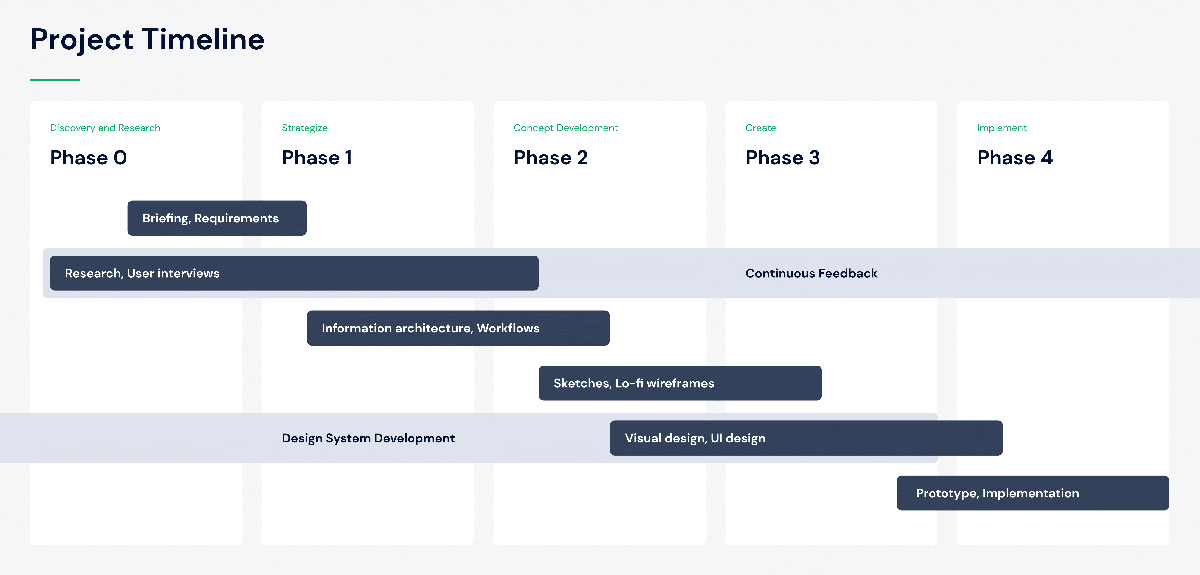
Strategize
Streamlining the different business administration processes
The team and I kicked the project off with a briefing. First requirements and insights are shared. Parallel, the team shares the research insights with stakeholders. We know that, due to the complexity of the project, requirements will change, shift or need to be added over time. We handle this well through continuous feedback and an iterative process-mindset.
Main business requirements
The primary business requirement is to come up with a solution that centralizes and streamlines the different administrational processes. Business administration processes contain the following in this context:
- Maintenance of companies, clients, activities, personnel, solutions and modules, prices, and contracts.
- Order registration and management.
- Hour registration.
- Invoicing.
Main user needs
The primary user needs are that the learning curve of the new tool is fast and simple. People need to understand the solution quickly – without much cognitive effort, while it being easy to use.
Concept development
Starting at a high level, while going more in-depth in an incremental, iterative manner
I conducted user interviews, to gain more insight in current processes and what terminology is being used. Speaking to project management, administration, executives, shareholders, finance and the business analyst. Some of them are part of the team.
After this data collection, I mapped out the workflow and information architecture. These schemes represent the tool at a high level. They are created with Figma’s FigJam.

High level, shared understanding
Through this visualization, it becomes easy for stakeholders to:
- Understand how the tool is structured and what it encompasses.
- Know how the tool will behave at a high level.
- Gain a shared understanding and agreement of the direction that we take.
The CEO, business analyst and I concluded that the best way for us to maintain momentum is to visualize the tool through sketches. They are most efficient to iterate rapidly, while being easy to understand.
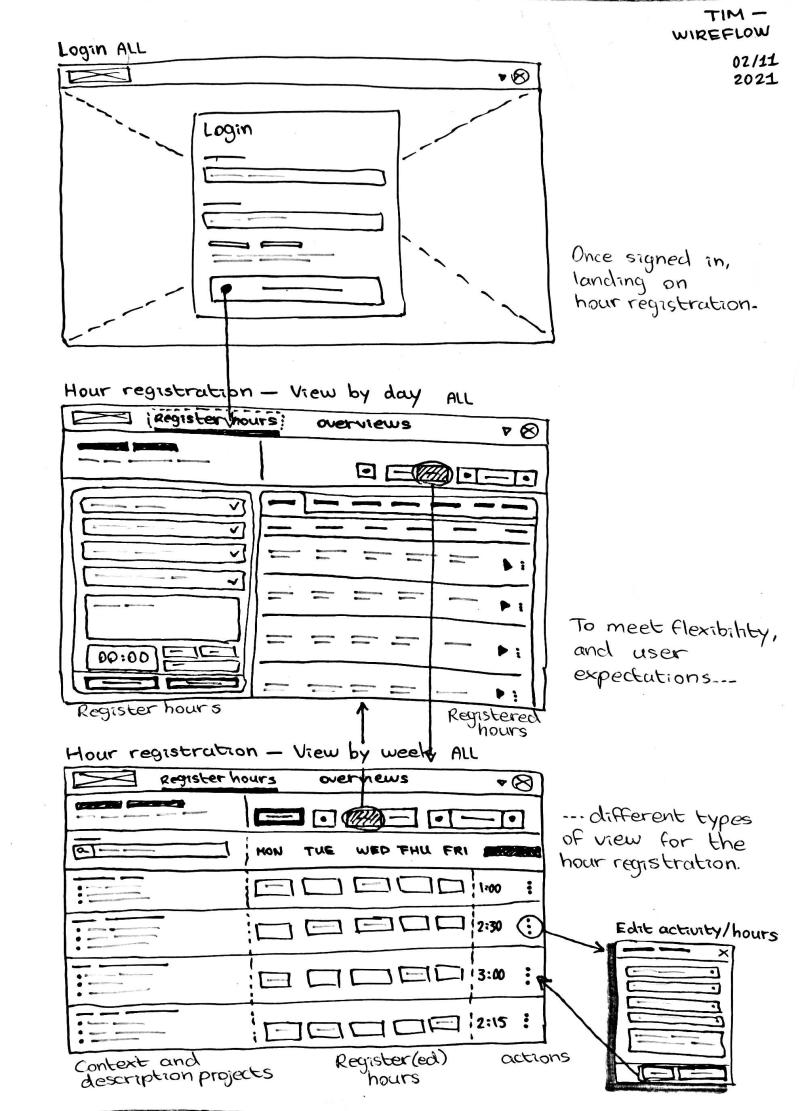
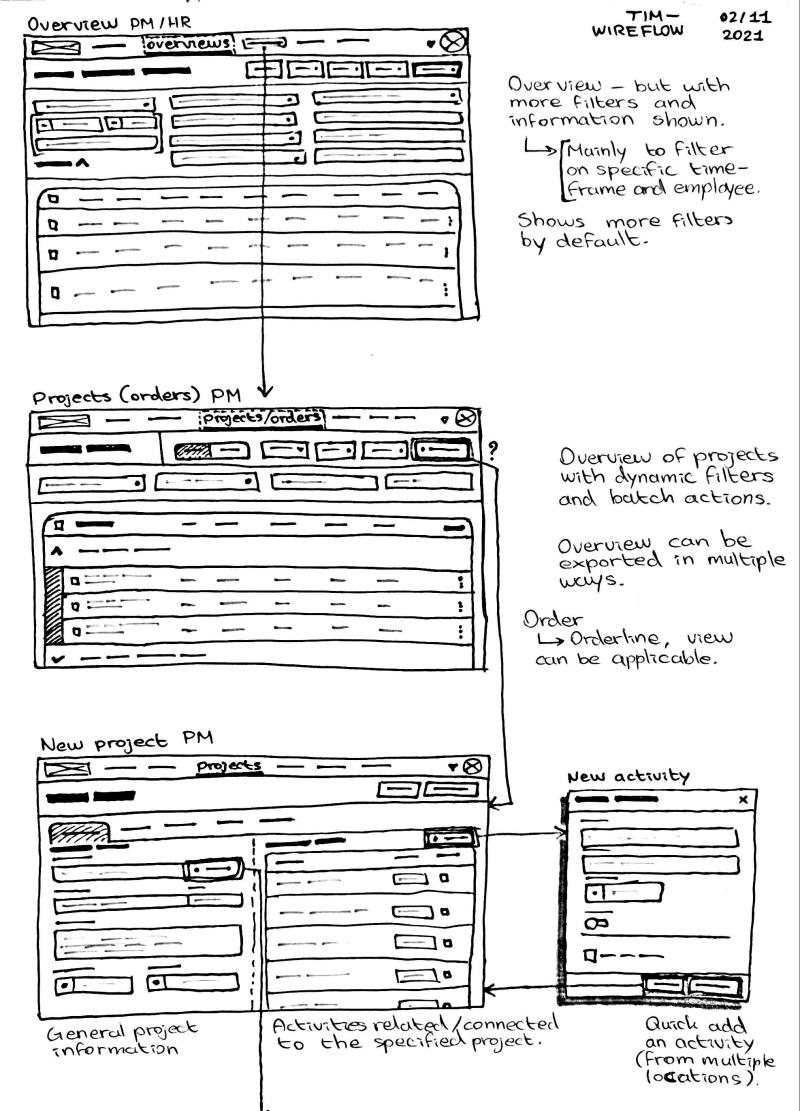
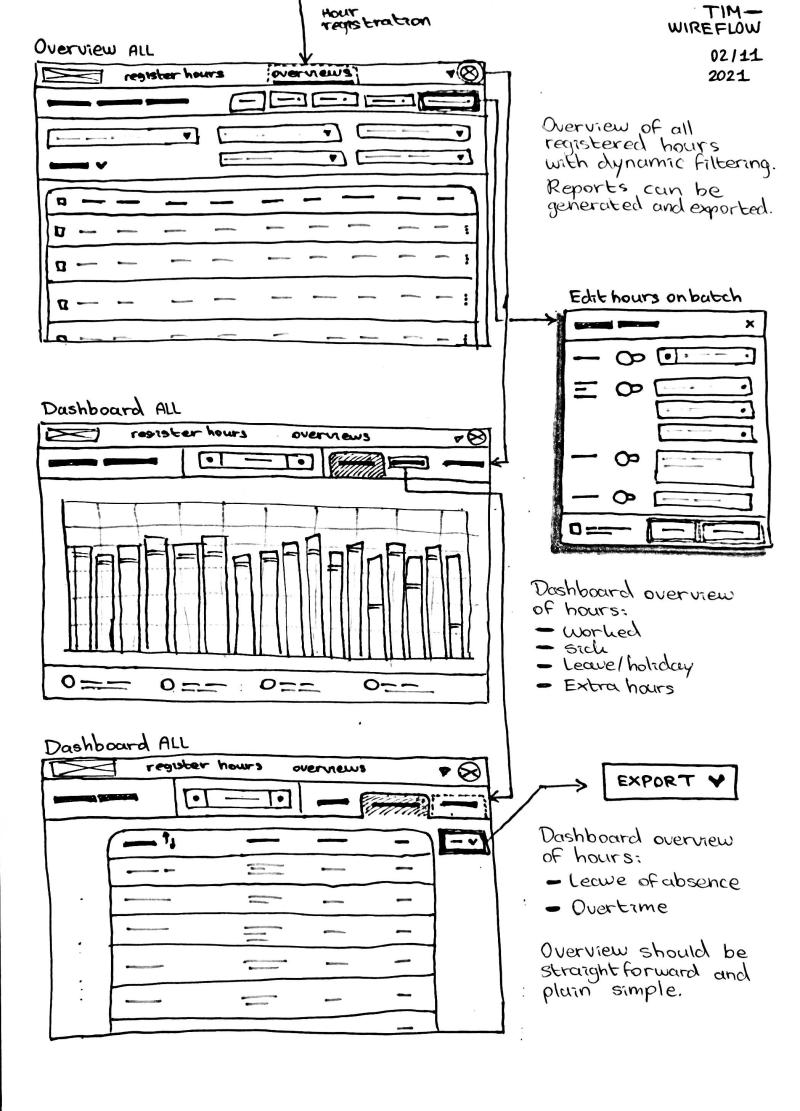
Making the possible solution tangible
Sketches transform the schemes to a more tangible form. They represent the tool at a lower, more detailed level. We did this to gather fast, continuous feedback. This prevents us from having to spend more valuable time later in the process.
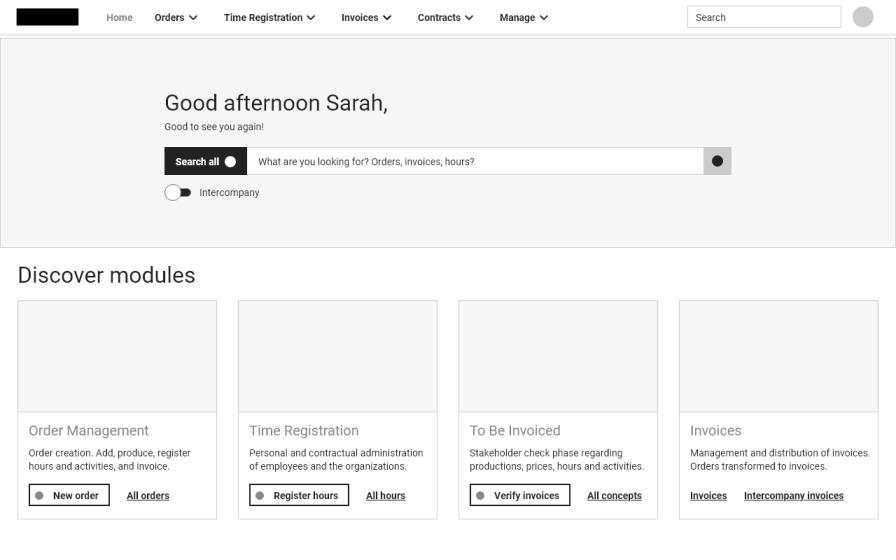
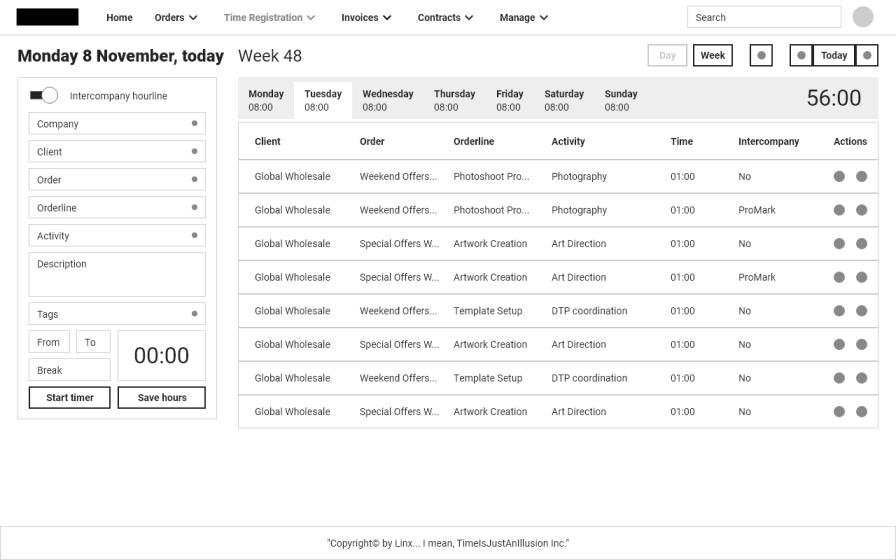
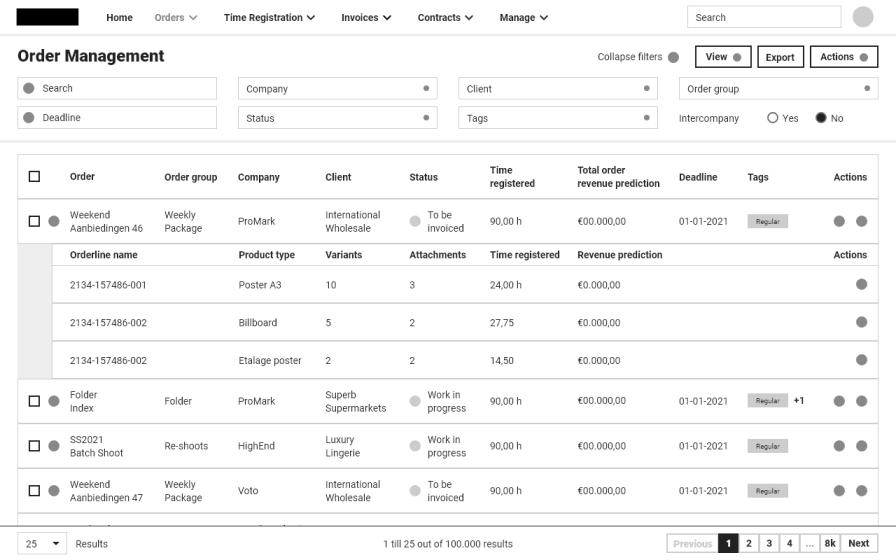
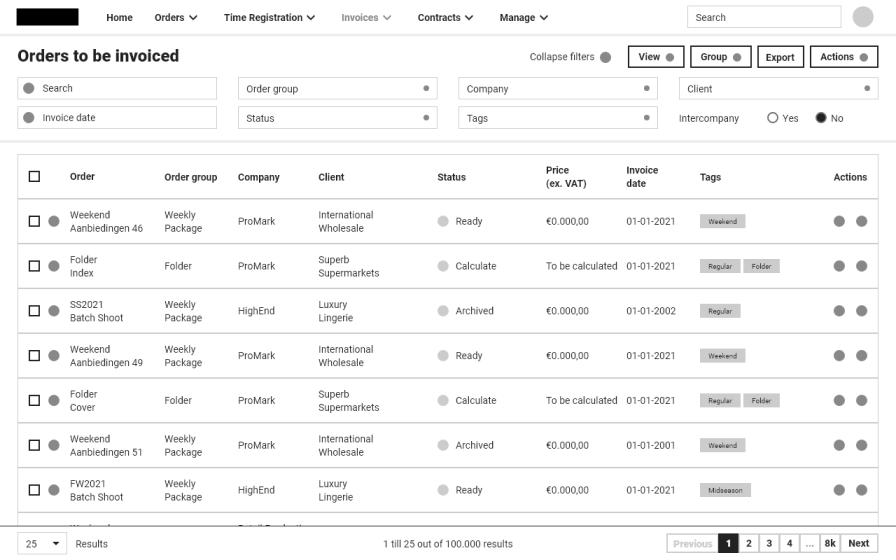
Create
Low learning curve with all business requirements integrated
People are used to the current processes, procedures and tools. Secondly, people find it hard to embrace change. This is a tough challenge by itself.
We are currently using the tool (also an alias) TIM for our personnel hour registrations. Research points out that the overall user experience of TIM is great. Despite the fact that TIM has all these great traits, the technical feasibility of the tool does not meet FullComm’s edge case requirements. It can’t handle the tremendous amounts of administration and management data.
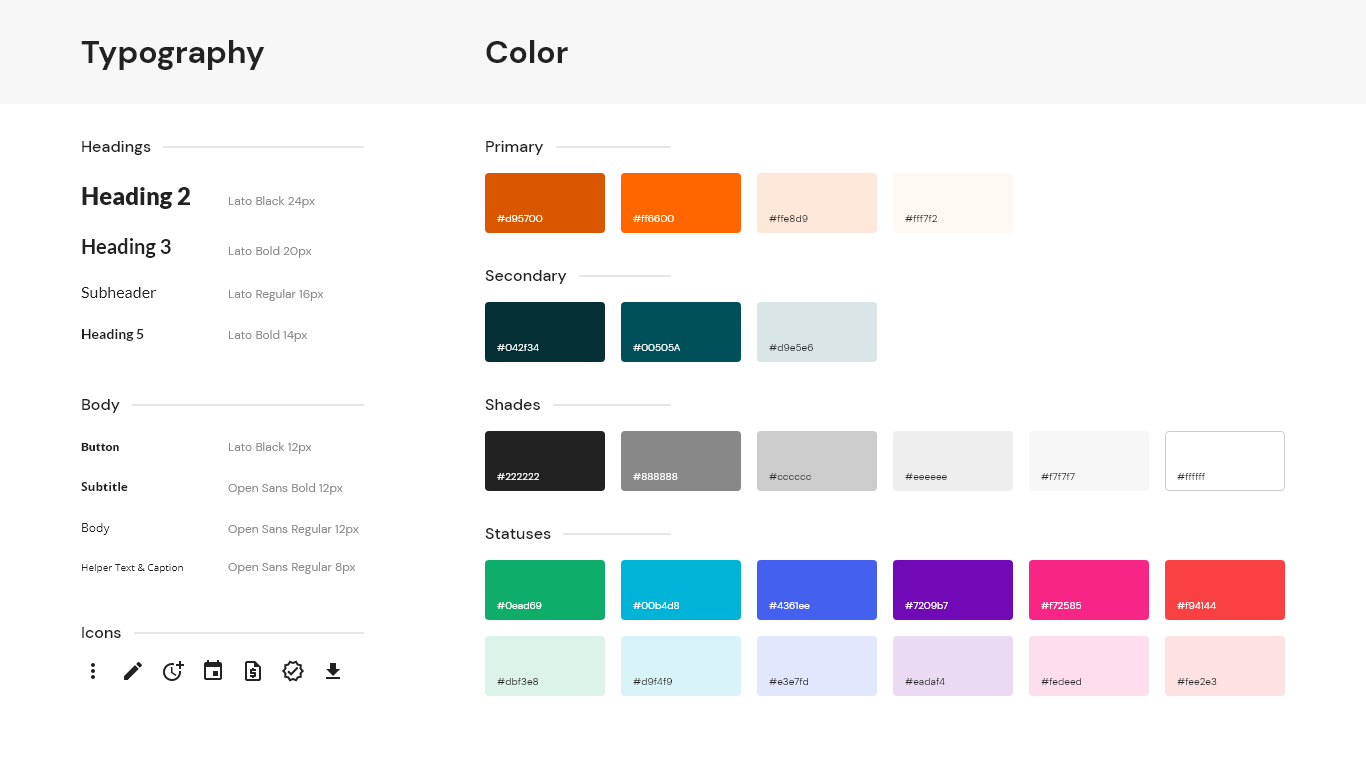
The design system
As we speak, I’m incrementally developing a design system for Linx, parallel to all running projects. The core purpose of the design system, is to make the user interfaces of our media portals and products:
- Consistent.
- Lower in front-end engineering commitment.
- Recognizable.
- Easier to learn.
I’ve brought all the points mentioned earlier together. I took the general layout and interaction of TIM into consideration, in combination with our design system. This results in a consistent, recognizable tool with a low learning curve, and innovation that’s manageable for the people.

Prototype and implementation
A detailed prototype with engineering specs for a smooth handover
After multiple iteration cycles, feedback sessions and – design – discussion, the visual design of the tool has been approved. I transformed the visual design into a detailed prototype, with Adobe XD. Both the team and I had a fair share in the written documentation that comes with the prototype.
In the design system, I specified components with corresponding states (hovers, toggles, static, and similar). With this practice, engineering can easily see how components should behave, and how they can be interacted with. This results in an even more efficient implementation phase.
The final product prototype shows too much confidential information. Since this is in conflict with the confidentiality agreement I signed, I cannot show the definitive product online.


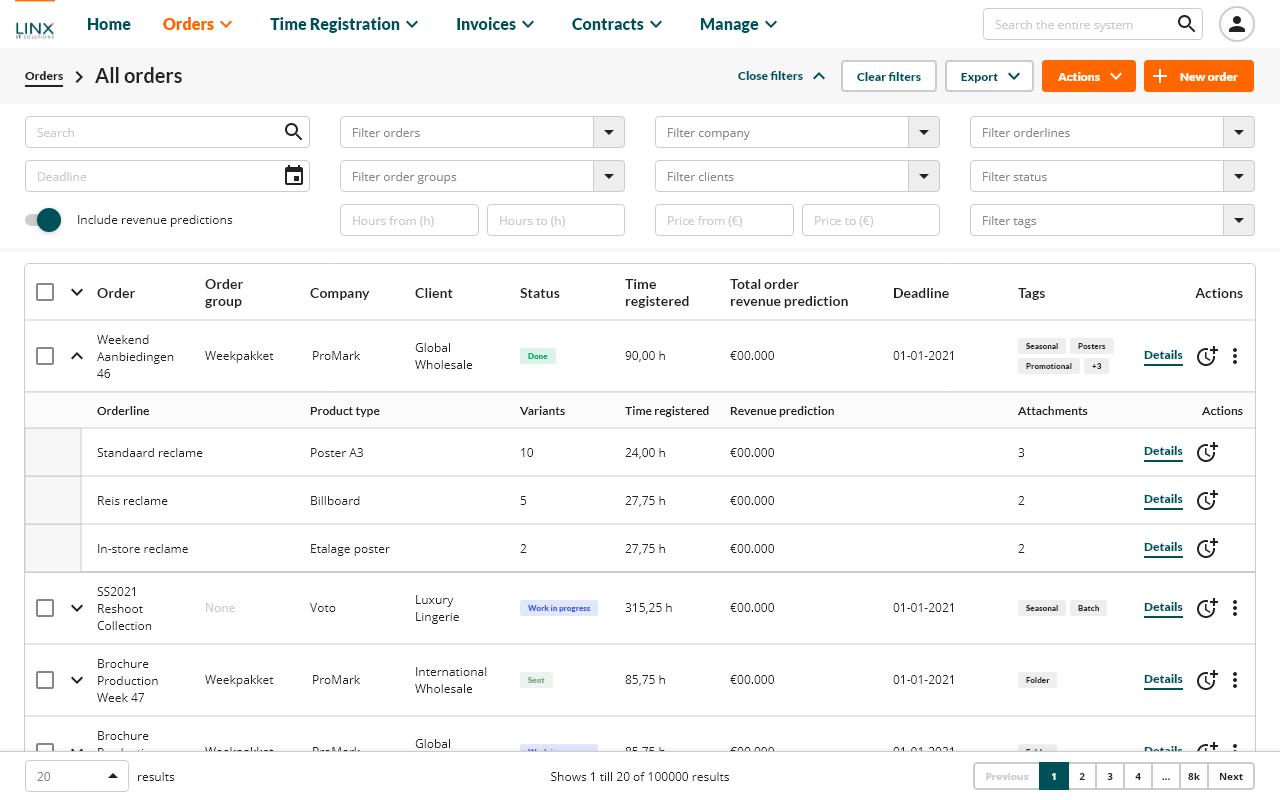
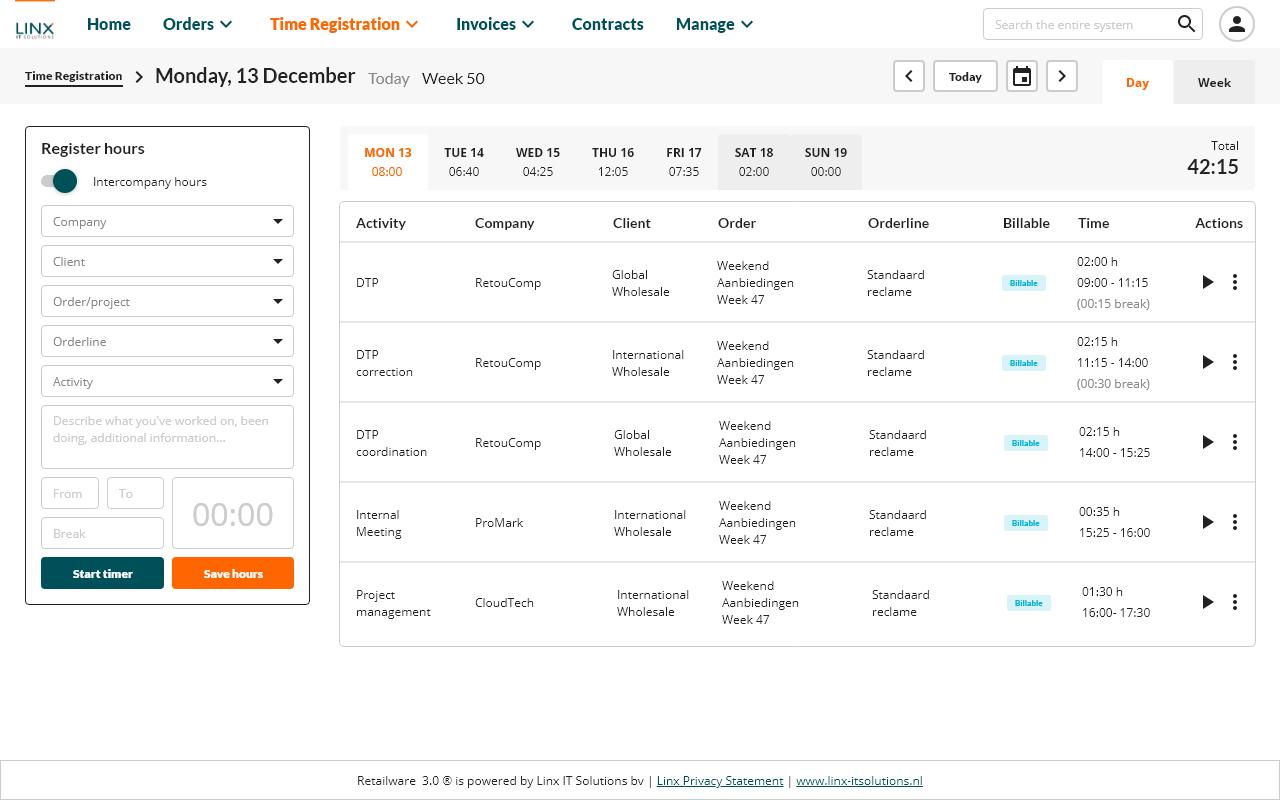
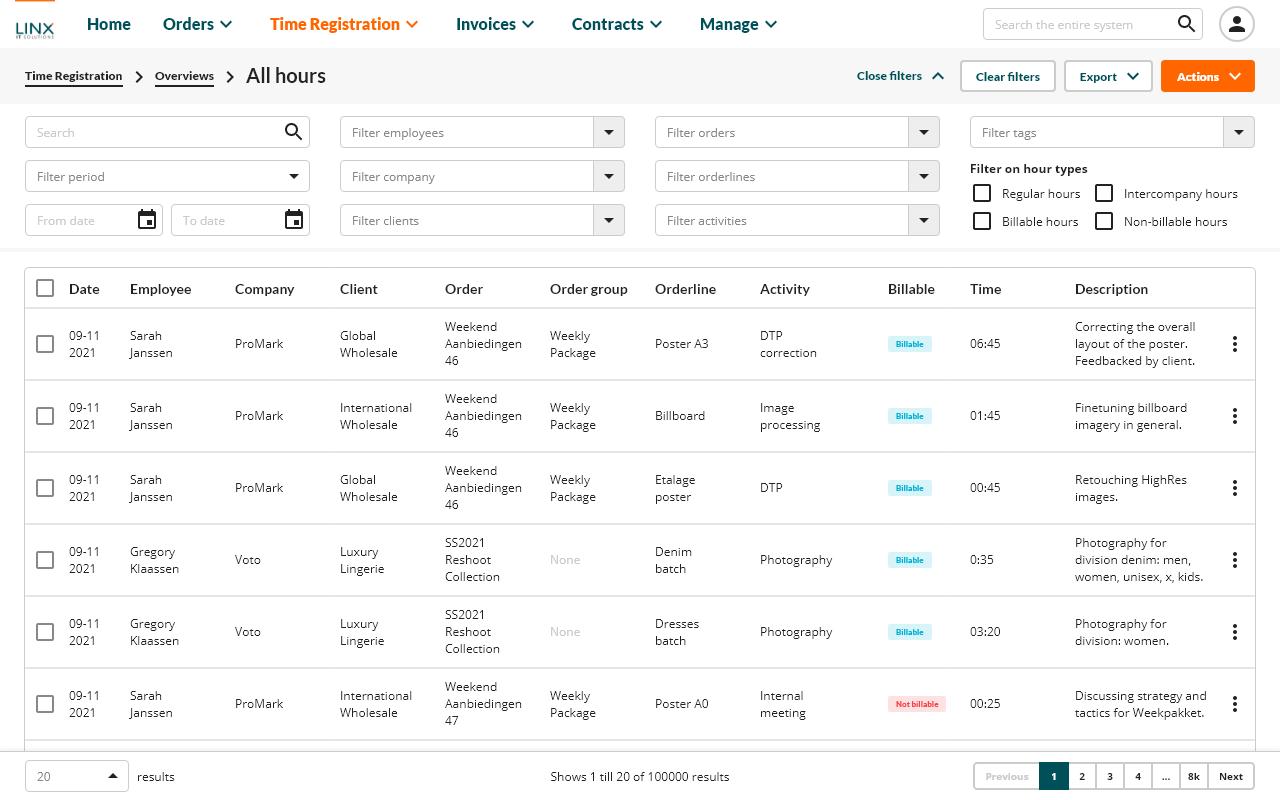
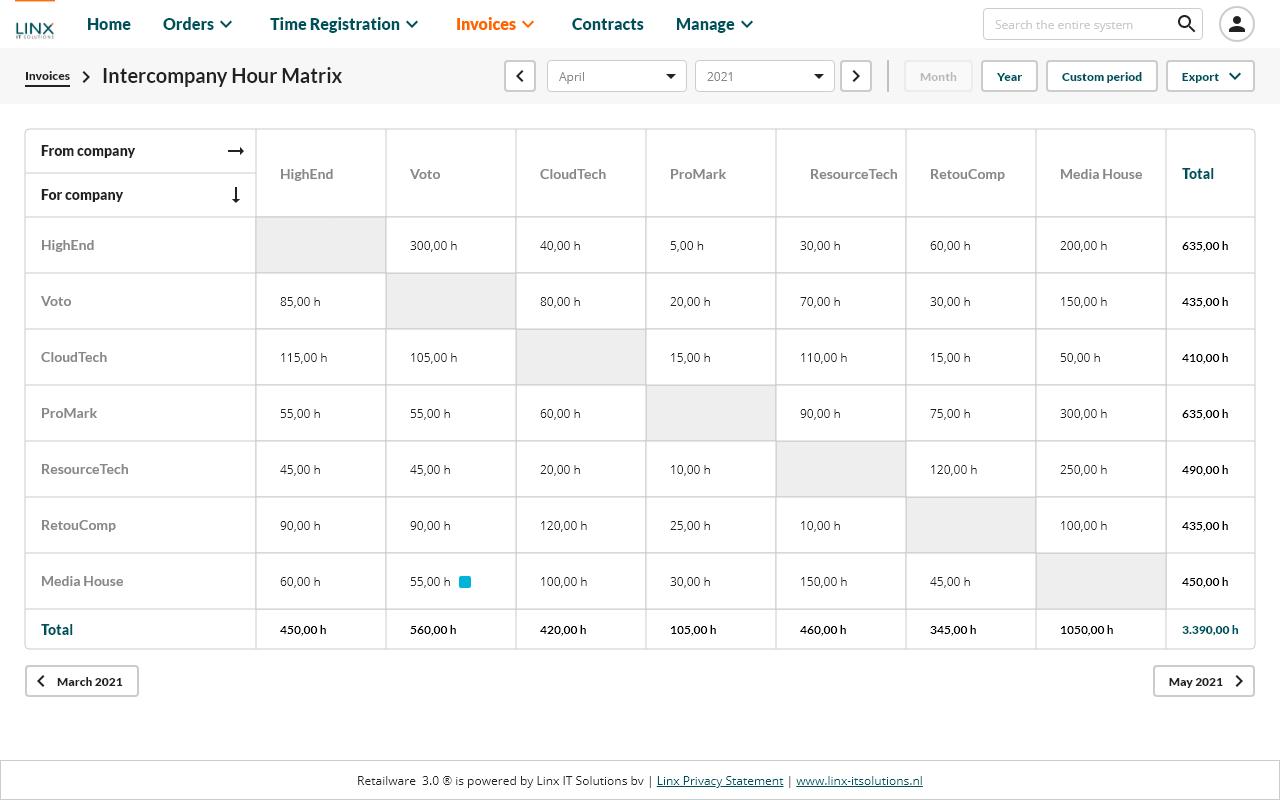


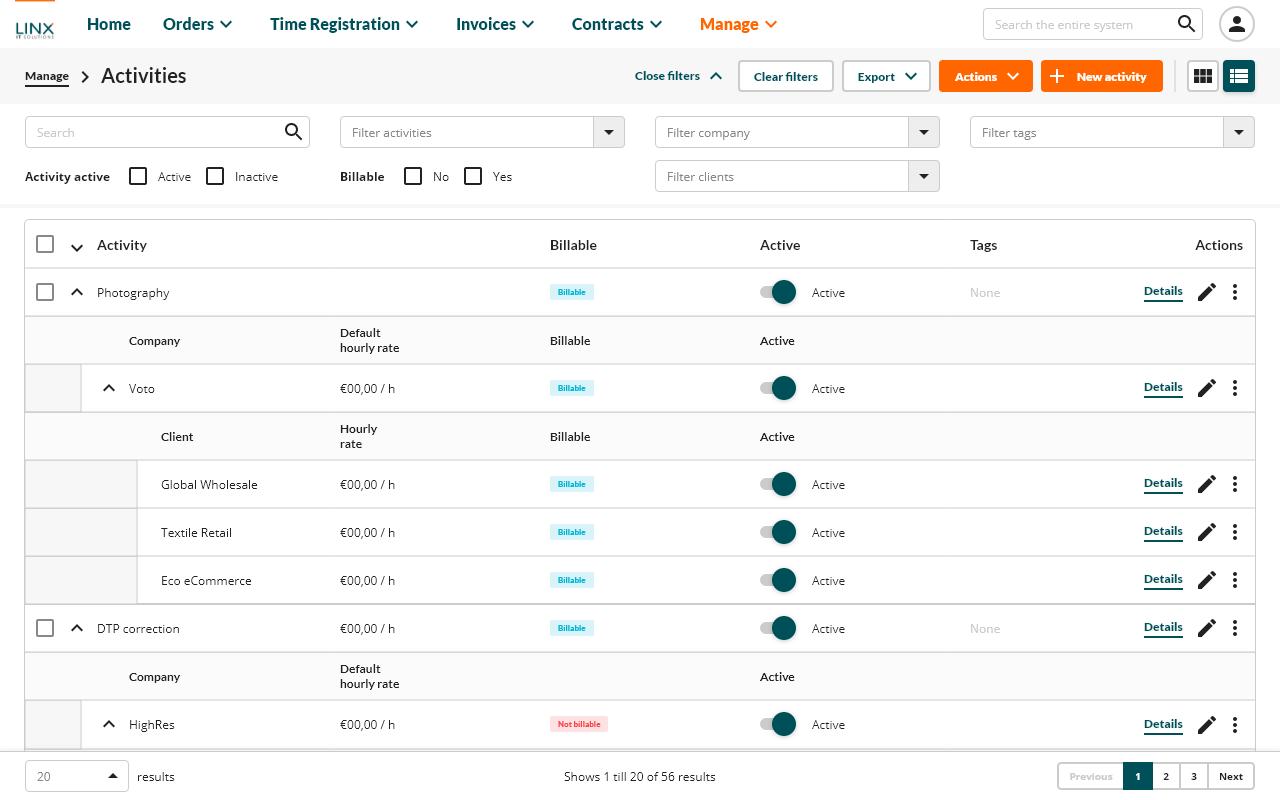
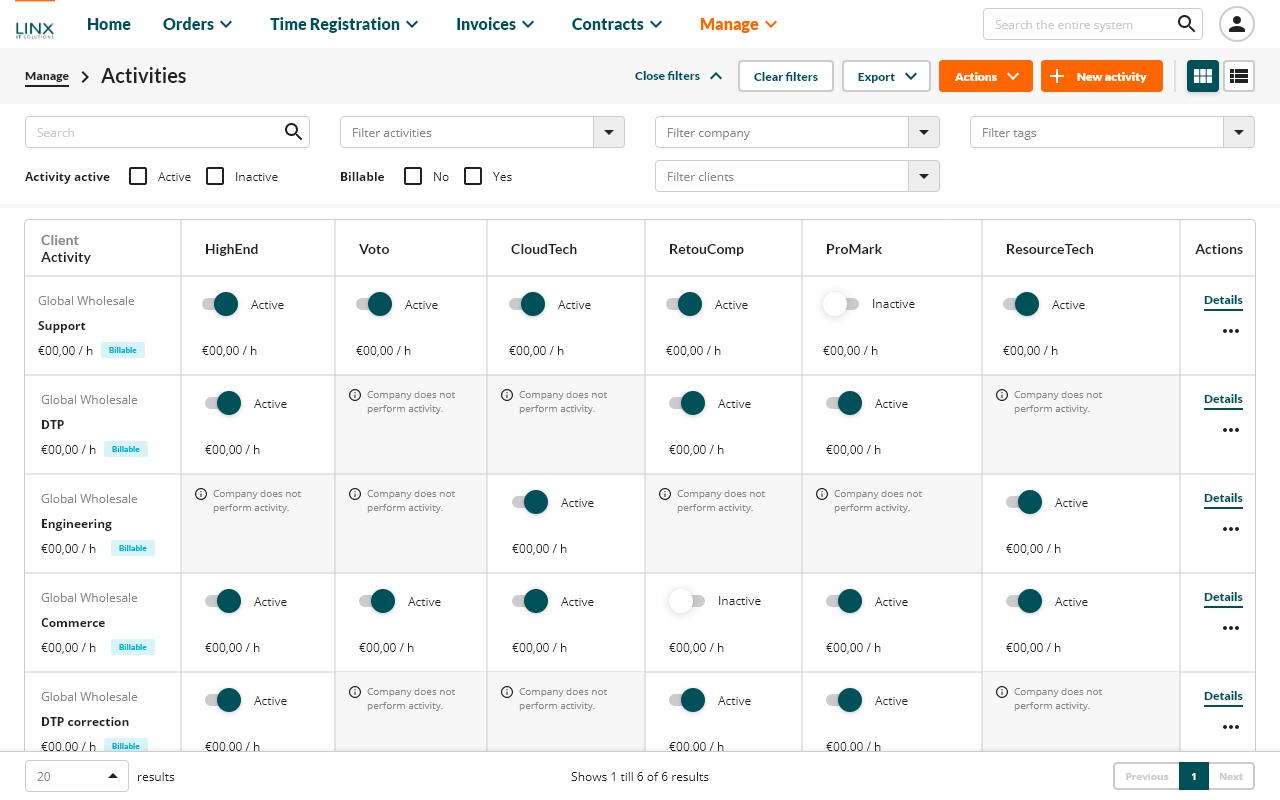
Next steps
Continuous feedback and improvement
We plan for gaining new insights, by maintaining the continuous – user – feedback stream. With this new knowledge, we tend to improve the final product over time. We found this the most appropriate tactic of acquiring new information. The majority of users are employed within FullComm, making direct user engagement easy.
What I’ve learned
Reflection
01
My biggest challenge
The size of the project got me overwhelmed. Especially in the beginning phase of the project. I put a lot of pressure on my shoulders. Mainly, since there was a lot at stake.
I created an environment, where I could work effectively and goal oriented by applying the following:
- Asking people for help and explanation.
- Not jumping to conclusions immediately.
- Listen to what people say, but not literally do what people say. Use your expertise.
02
Best lesson
It’s very good to think about the problem/challenge first, and to analyze it, before you jump into the project. I know that I’d like to start tackling a project quickly. Since I’m conscious of this trait, I’m actively working on calling myself back and taking that extra moment to ‘fall in love’ with the problem, instead of jumping straight in.
The first milestone has been accomplished thanks to this project!